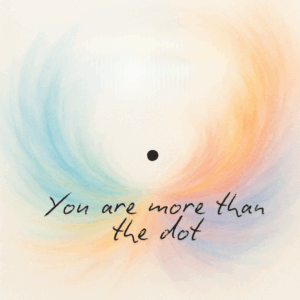The “Imposter Syndrome” Anatomy
Imposter Syndrome Anatomy: In part two we look at the causes and structure of the “Imposter Syndrome”. When we understand we ACT.
(Remember this is part two of the three blog series – it might be helpful to read part 1 first)
Now this is my take on the anatomy of the Imposter Syndrome. It is based on the solution focused hypnotherapy (SFH) strategies. To avoid explaining the whole of the SFH here, check out the “Solution Focused” presentation in the Free Resources.
To make it easy to write and hopefully to make it more clear I’ve written the anatomy in bullet points.
- We have one brain and within that brain are two minds. The intellectual mind, which is positive and can come up with new solutions. And the primitive mind which is negative, and can’t come up with new solutions. The primitive mind’s sole function is to keep us safe. The primitive mind is where our fight, flight and freeze centre resides.
- When we are in a new situation (e.g. a room full of strangers) our primitive mind flags danger. Danger translates to a feeling of fear / anxiety. The intellectual mind then steps in and comes up with a solution, i.e. relax, get people to talk about themselves, tell a joke etc. We then return to a normal relaxed open state, because we are in control, we feel secure as we have a solution.
Take Over
- On occasions when there is a high negative emotional response, e.g. a person is in overwhelm, either because there is too much going on in their lives or there has been a significant traumatic event, then the primitive mind steps in and takes over. It takes over because the individual is in a fight or flight mindset and therefore has no capacity to think of a solution, cutting off access to the Intellectual mind. The primitive mind just wants us to get away from the situation or make the situation go away.
Stuck in the primitive mind
- The triggering event / environment is then remembered purely from the primitive mind perspective of fight, flight, freeze. There is very little rational thinking associated with the memory, therefore when we experience that event / environment we automatically respond from that fight, flight, freeze mindset.
- And because the primitive mind needs to assign a cause for the overwhelm / trauma / uncomfortable feelings, if it can’t assign it to the event/environment, then it makes us the cause. This is when we use language like “I’m an imposter”, i.e. we are the cause of the discomfort.
- Going one step further: “I’m an imposter” is an uncomfortable feeling so we move it outside of ourselves and it becomes a syndrome. We alleviate the discomfort by saying it’s not us that is the cause but something outside of us something we have, i.e. a syndrome.
- We then end up in a habit of believing we have “Imposter Syndrome”. So when we are in the triggering event / environment we feel uncomfortable and vulnerable because we have “Imposter Syndrome”.
So that is a potted way of looking at Imposter Syndrome.
(Once again remember this is my take on the Imposter Syndrome. I find it useful. Take from it what you will)

Prime Directive
From the anatomy of the Imposter Syndrome you can see that the primitive mind’s prime directive is to keep us safe. If it thinks that we are in some sort of danger then the primitive mind takes over. When the primitive mind takes over, it uses feelings of threat, stress, anxiety, which engage us, making us want to get away from the situation.
In the above situation we are being controlled by feelings and thoughts produced by the Imposter Syndrome. We react to those feelings and thoughts rather than being in control of them. We are at effect to those thoughts rather than at cause.
What makes the above worse is that often the triggering event / environment, e.g. the work place – new job – promotion, is something that we can not abandon because we have commitments that are associated with that event. In the work scenario we have commitments to our families, maybe financial commitments or even commitments to our own ambitions. Therefore we endure the feels of being an imposter, which makes it appear even more real.
What to do?
The key to unlocking ourselves from the “Imposter Syndrome” is take back control. Since the primitive mind took control because we were out of control, due to some sort of overwhelm, it’ll let go of control when we are back in control. So the antidote is to take actions to address the perceived danger that is being flagged by the primitive mind.
Which actions? Well that is where part 3 of this blog comes in. Part 3 gives some suggestions of which actions to take.
Also of course there is Solution Focused Hypnotherapy. See below.
The Hypnotherapy Approach
Solution focused hypnotherapy (SFHT) approach to the Imposter Syndrome is to help us get back in control. It guides the individual back into the intellectual / rational mind, where they can take positive action to address any concerns that have been flagged.
Solution Focused Hypnotherapy does the above by raising the levels of the wellbeing neurotransmitter serotonin through:
- Explaining the workings of the mind.
- The 3P strategy of Positive Action, Positive Interaction and Positive Thinking.
- The use of relaxation to relax the primitive mind and gain access to the intellectual mind.
- Positive suggestions.
- And a lot more.
If you want to find out more about the Imposter Syndrome, how the mind works and how we create resistances such as anxiety, depression, anger, contact me at ACT Hypnotherapy for your FREE no obligation consultation. During the consultation you will learn what to do about those limiting emotions so that you are free to live the life you want.
Accreditation:National Council of Hypnotherapy (NCH), Association of Solution Focused Hypnotherapy (AfSFH), Association of Neuro-linguistic Programmers (ANLP)





